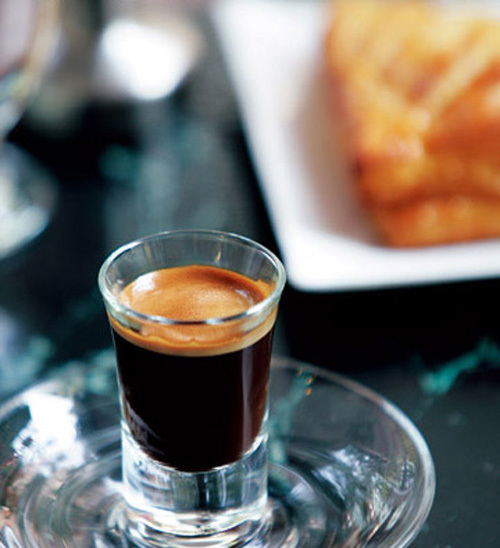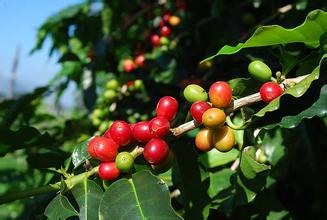A brief discussion on the "culprit" of the astringent taste of coffee-- Tannin to understand the cause of the astringency in coffee
-tannin
-Coffee tannic acid
Coffee contains a variety of ingredients, extraction is not to extract all of these ingredients, there is usually such a rule: if the amount of coffee powder is fixed, the amount of extraction of soluble ingredients is determined by grinding degree and time.
The finer the grinding degree of coffee powder is, the longer the extraction time is, the more ingredients will be obtained. According to the experiment, if all the ingredients that can be extracted from the quantitative coffee powder are extracted, up to 30% of the ingredients can be extracted. But not all of these ingredients are what we need. Coffee has ingredients that we need as well as ingredients we don't need, and the longer it takes to extract, the easier it is to extract bad ingredients that we don't need.
One of the most important ingredients we do not need is "tannin", the correct name should be called tannic acid. Raw coffee beans contain 8%-9% and roasted raw beans contain 4%-5%. Like caffeine, it has the property of being decomposed at certain baking degrees. When baked to a depth around French or Italian baking, 90% of the tannins are broken down.
Most people will think that deep-roasted coffee is strong and light-roasted coffee is weak, this idea is completely wrong, mistakenly thinking that light-roasted coffee is less irritating, and if you quote it before going to bed, it will make you open your eyes until dawn! The deeper the baking degree, the less caffeine and tannin. The irritation will also diminish. Don't be fooled by the appearance color of the coffee.
The tannins we don't want to extract are responsible for the astringency of coffee. Tannins are angels and demons, a small amount of tannins can play the sweet and mellow thickness of coffee, a small amount of coffee tannic acid also has a wide range of antibacterial effects! But the finer the grinding and the longer the extraction time, the devil will play a role, making the coffee full of astringency!
In order to prevent excessive extraction of tannins, the key is that coffee beans are ground in roughness, with less powder and slowly extracted at a lower water temperature (below 90 °).
Preventing excessive extraction of tannins is also a great rule for making delicious coffee! Often used to adjust the taste of coffee, so that coffee becomes smooth and delicate, less irritating!
Source:
Happy Coffee Xiao Xu's blog
Important Notice :
前街咖啡 FrontStreet Coffee has moved to new addredd:
FrontStreet Coffee Address: 315,Donghua East Road,GuangZhou
Tel:020 38364473
- Prev

The Myth about the taste of Coffee-- discussion on the astringency in Coffee
The acidity of the cups made by the students is somewhat strong, and the acidity seems to be dissociated from the bitter taste, and the overall balance is greatly reduced, and it is mainly strong bitterness after the acid. At this time the problem came out several cups she felt obviously astringent taste, and I always think that this is not astringent taste but a combination of strong acid and bitter taste of a sour thorn. Explain for a long time, but I still can't.
- Next

The difference between the three native species of coffee and the introduction of Arabica and Robusta
Coffee belongs to the evergreen shrub of the genus Rubiaceae, which is centered in the tropics. There are about 6000 species of Rubiaceae belonging to 500 genera. Coffee has always been considered to have certain effects, such as invigorating the stomach, waking up the brain, stopping bleeding, dissipating heat, strengthening the body and so on. There are about 40 species of coffee plants, but the only ones that can produce coffee beans of commercial value are Arabica, Robusta and Libby.
Related
- What is the meaning of lactic acid fermentation with coffee bean treatment?
- How to judge the state of foam by sound?
- How does the latte pull out the unicorn pattern? Come to get for a little trick to improve the flower pull!
- Will flower pulling affect the taste of the latte?
- Do you know the history of coffee?
- The difference between honey treatment and sun washing what is raisin honey treatment?
- What kind of milk can a novice use to make coffee foam to keep the foam longer? The correct method and skills of milking tutorial sharing
- Why do washed coffee beans taste sour? Flavor characteristics of washed Coffee
- Introduction to the skill of how to practice the size and height of water injection around the circle of hand-brewed coffee
- How do beginners practice coffee flower drawing from scratch?

